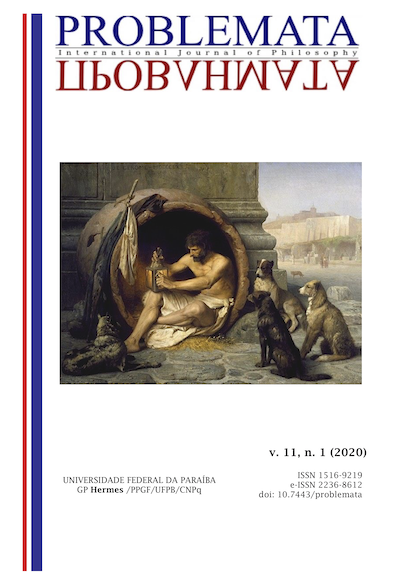PUERPERAL FEVER:
THE INDIFFERENCE ABOUT IGNAZ SEMMELWEIS’ HYPOTHESIS BY A SOCIAL CONSTRUCTIVISM APPROACH
DOI:
https://doi.org/10.7443/problemata.v11i1.49330Keywords:
Puerperal fever, Ignaz Semmelweis, Social constructivismAbstract
Around 1840s, Hungarian physician Ignaz Semmelweis proposed a prophylaxis for puerperal fever cases. Working at the Vienna Hospital, he was successful in his proposal; then, he proceeded to explain the cause of the disease. His hypothesis clashed strongly with the medical- scientific knowledge established at the time; nevertheless, it was warmly welcomed by the Vienna Academy of Sciences, which suggested a development of Semmelweis's work. Semmelweis declined of this grant and simultaneously attacked the medical community, which he found guilty of the disease. Finally, his proposal was totally disregarded by the community. The purpose of this article is, starting from the historiography about this episode, to introduce a social constructivist philosophical explanation of the disregard of Semmelweis’ hypothesis.
Downloads
References
BIRD, A. 2010. Eliminative Abduction: examples from medicine. Studies in History and Philosophy of Science, 41: 345-352, 2010.
BIRD, A. 2014. Inferência da Única Explicação. Cognitio, 15(2):375-384.
BOWLER. P. 1989. The Mendelian Revolution. Baltimore, Johns Hopkins University Press, 207 p.
CARTER, K.; CARTER, B. 2005. Childbed fever: a scientific biography of Ignaz Semmelweis. Piscataway, Transaction Publishers, 143 p.
CARTER, K. 1983. Translator’s Introduction. The etiology, concept, and prophylaxis of childbed fever. Madison, The University of Wisconsin Press, 263 p.
GILLIES, D. 2005. Hempelian and Kuhnian Approaches in the Philosophy of Medicine: the Semmelweis case. Studies in the History and Philosophy of Biological and Medicine Sciences, 36, 159-181.
HEMPEL, C. 1974. Filosofia da ciência natural. 2ª ed.,. Rio de Janeiro, Zahar, 142 p.
LAKATOS, I. 1978. The methodology of Scientific Research Programmes. In: J. WORRAL; C. GREGORY (eds.), Philosophical Papers, vol. 1. Chicago, Chicago Press, p. 1-15.
Cambridge, Cambridge University Press, 250 p.
LATOUR, B. 2001. Ciência em Ação: São Paulo, UNESP, 438 p.
LIPTON, P. 2004. Inference to the Best Explanation. 2ª ed., London: Routledge.
MARTINS, R; MARTINS, L.; TOLEDO, M.; FERREIRA, R. 1997. Contágio. História da prevenção das doenças transmissíveis. São Paulo, Editora Moderna, 199 p.
NULAND, S. 2005. A peste dos médicos: germes, febre pós-parto e a estranha história de Ignác Semmelweis. São Paulo, Companhia das Letras, 164 p.
SEMMELWEIS, I. [1861] 1983. The etiology, concept, and prophylaxis of childbed fever. Madison, The University of Wisconsin Press, 1983. 263 p.
Downloads
Published
Issue
Section
License
Authors who publish with this journal agree to the following terms:
- Authors retain copyright and grant the journal right of first publication with the work simultaneously licensed under a Creative Commons Attribution License that allows others to share the work with an acknowledgement of the work's authorship and initial publication in this journal.
- Authors are able to enter into separate, additional contractual arrangements for the non-exclusive distribution of the journal's published version of the work (e.g., post it to an institutional repository or publish it in a book), with an acknowledgement of its initial publication in this journal.
-
- Authors are permitted and encouraged to post their work online (e.g., in institutional repositories or on their website) prior to and during the submission process, as it can lead to productive exchanges, as well as earlier and greater citation of published work (See The Effect of Open Access).





